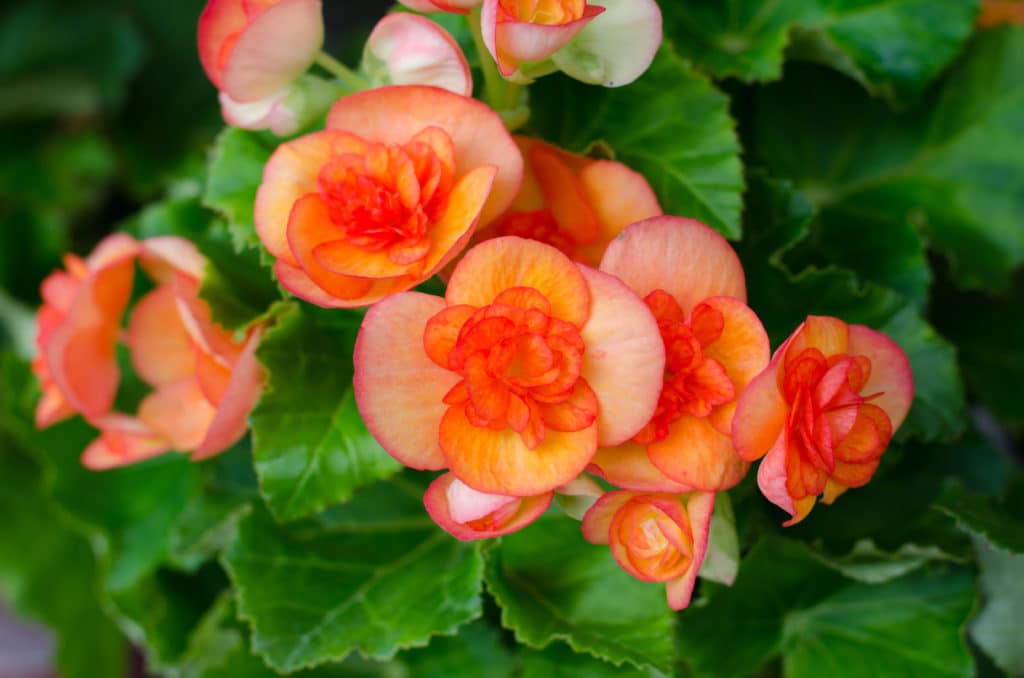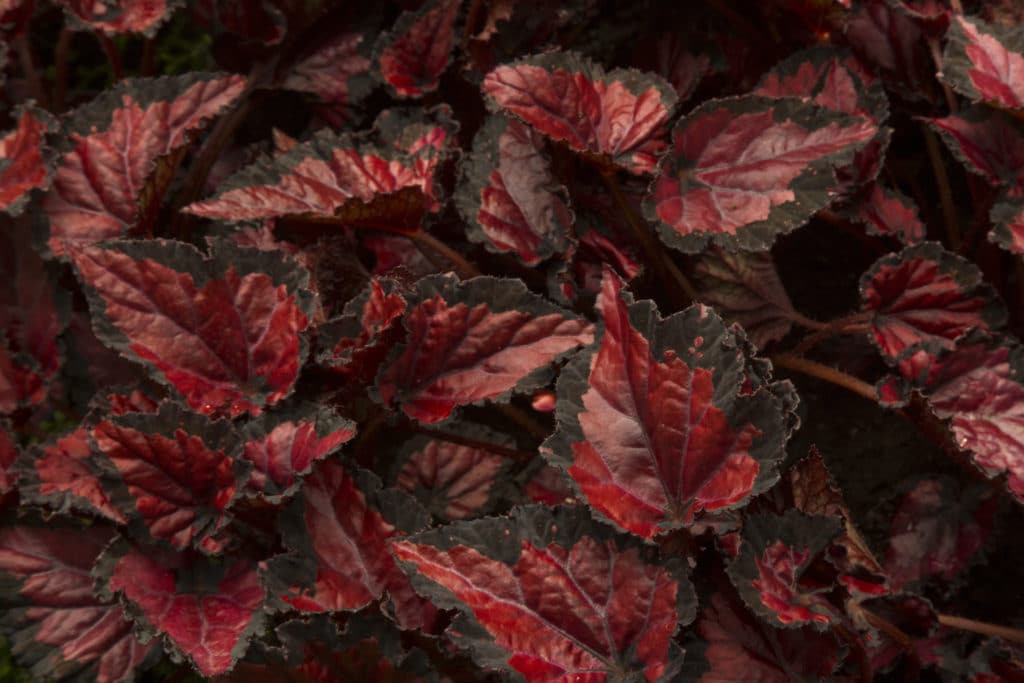
Begonia Flower 
Reiger Begonia 
Rex Begonia 
Multi-colored begonia leaves of different types.
Though many consider begonias to be an outdoor plant, they also make excellent indoor plants that may bloom the entire year. Begonia plants originally came from the tropical, moist regions of southern Asia, Africa, South America, and Central America which is why they require such high humidity.
Although certain varieties of begonia can adapt to lower light, most begonias need medium to bright indirect light. The better the light, the more flowers a begonia plant produces. Leaves and flowers drop off when the light is too low.
Water a begonia well and then allow the top 50% of the soil to dry out before watering again. Too much water causes mildew, mold, and permanent root damage. Water dripped on the leaves may cause leaf-rot.
Begonias plants do well in cool temperatures between 65°-75°.
A Begonia needs a great deal of humidity to thrive. You can increase the humidity by placing the plant on a wet pebble tray, by putting a small humidifier near the plant, or by grouping several plants close to each other and creating a mini- greenhouse effect.
Begonia plants are relatively pest-free.
Because of the high humidity begonia plants require, powdery mildew is a major problem. A commercial Fungicide is usually the best way to get rid of powdery mildew on a begonia plant. To help prevent mildew and mold provide good air circulation and keep the leaves dry.
